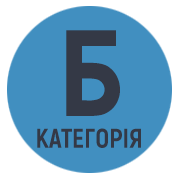THE IMPACT OF ARMED CONFLICT ON THE HIGHER EDUCATION SYSTEM: ANALYSIS OF THE IMPACT OF RELOCATION ON ACADEMIC LEGACY AND INSTITUTIONAL SUSTAINABILITY
DOI:
https://doi.org/10.51547/ppp.dp.ua/2025.1.2Keywords:
relocation, armed conflict, higher education system, resilience mechanism, higher education institutions, state institutions, public education administrationAbstract
The complex relationship between armed conflict and the higher education system has become a critical area of research, especially in the context of the increasing displacement of higher education institutions caused by war. When armed conflicts erupt and escalate, they not only destroy the social fabric of territorial communities, but also severely impact educational institutions, leading to a set of challenges that threaten academic continuity and institutional stability. This research article aims to analyze the multifaceted impact of war on higher education, focusing especially on the aspect of relocation, which has become a common consequence for students, teachers and educational institutions in conflict zones. In many cases, armed conflicts force people to leave their homes, resulting in the significant displacement of students and faculty, which interrupts their learning activities and potentially loses valuable educational resources. In addition, the viability of higher education institutions is under threat as they face declining enrollment, funding, and the challenge of providing quality education in an environment of interruption, multi-regime, instability, and uncertainty. The war is a significant disruptive factor for the higher education system, with unprecedented challenges that were hard to foresee even during the pandemic, when higher education had already undergone significant changes and reforms. If during the pandemic (coronavirus) the main difficulties were in adapting the learning format, organizing work processes, choosing platforms and methods of work using information and communication technologies, now the need to resolutely fight to preserve the infrastructure of higher education institutions (HEIs) and ensure the safety of students and teaching staff has come to the fore. Despite the complexity of the situation, the unprecedented unity of Ukrainian society is a powerful force in overcoming these challenges. This cohesion has become a solid foundation for the social stability of the state and nationwide resistance to Russian aggression. Such a rapid unification of Ukrainian society and state institutions was made possible primarily due to the processes of democratization of social relations that have been taking place in Ukraine throughout the years of its independence on the basis of national values.
References
Pogrebnyak V, Dashkovska O. Vyshcha shkola Ukrayiny v umovakh voyennykh zahroz i vyklykiv: realiyi ta perspektyvy [Higher education in Ukraine in the face of military threats and challenges: realities and prospects]. Novi tekhnolohiyi navchannya. 08, Zhovten 2024; (98): 166–74. Retrieved from: http://www.journal.org.ua/index.php/ntn/article/view/410
Vplyv viyny na vyshchu osvitu v Ukrayini: vyklyky ta perspektyvy [The impact of the war on higher education in Ukraine: challenges and prospects]. Konspekt podiy. Oleh Sharov, Heneral'nyy dyrektor dyrektoratu fakhovoyi peredvyshchoyi, vyshchoyi osvity Ministerstva osvity i nauky Ukrayiny. Retrieved from: https://cedos.org.ua/events/vplyv-vijny-na-vyshhu-osvitu-v-ukrayiny-vyklyky-ta-perspektyvy/
Ukrayins'ka osvita v umovakh viyny [Ukrainian education in wartime]: monohrafiya / za nauk. red. S. O. Terepyshchoho. Kyyiv: Vyd-vo NPU imeni M. P. Drahomanova, 2020. 234 s.
Topuzov O., Holovko M. & Lokshyna O. (2023). Osvitni vtraty v period voyennoho stanu: problemy diahnostyky ta kompensatsiyi [Educational losses during martial law: problems of diagnosis and compensation.]. Ukrayins'kyy pedahohichnyy zhurnal, (1), 5–13.
Chykalova M. & Yukhno N. (2023). Osoblyvosti osvitn'oho protsesu v umovakh povnomasshtabnykh boyovykh diy [Peculiarities of the educational process in conditions of full-scale hostilities]. Ukrayins'kyy pedahohichnyy zhurnal, (3), 13–22
Dani pro kil'kist' zruynovanykh ta poshkodzhenykh budivel' ZVO [Data on the number of destroyed and damaged buildings of the Higher Education Institutions]. Retrieved from: https://saveschools.in.ua/
Ukrayina Deutsche Gesellschaft für Internationale Zusammenarbeit (GIZ) GmbH. Retrieved from: https://www.giz.de/en/worldwide/32413.html
GCPEA. (2022, March 10). Statement by GCPEA Executive Director, Diya Nijhowne, on Attacks on Education in Ukraine. Retrieved May 5, 2022. Retrieved from: https://protectingeducation.org/news/statement-by-gcpea-executivedirector-diya/
UNHCR. (2019). Refugee education 2030: A Strategy for Refugee Inclusion. Retrieved from: https://www.unhcr.org/5d651da88d7.pdf
UNICEF. (2017, September 18). 27 million children out of school in conflict zones. Retrieved May 5, 2022, Retrieved from: https://www.unicef.org/press-releases/27-million-children-out-school-conflict-zones



